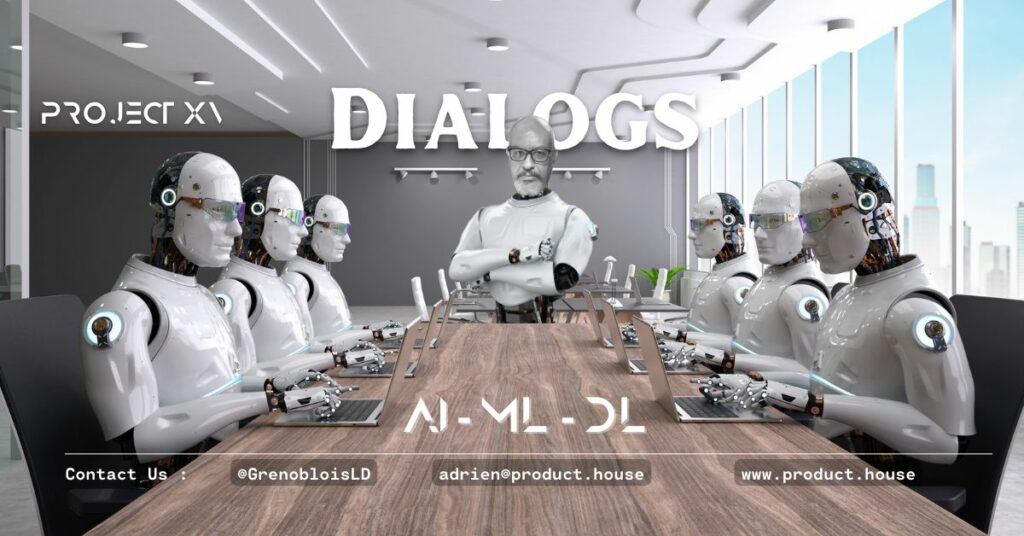Satoshi Nakamoto Bitcoin White Paper for The Rest of Us
Here is the emblematic article on Bitcoin from the so-called Satoshi Nakamoto explained to 12 years old so that we can get a good understanding of the text.
Abstract Simplified for the Rest of Us
Sometimes when we buy things online, we have to use a bank or some other company to handle our money. But what if we could just send money directly to the person we’re buying from? That’s what we want to do, but there’s a problem. We need to make sure that someone doesn’t use the same money twice!
To solve this problem, we suggest using a special computer network. This network would keep track of all the transactions and make sure they happened in the right order. It would use something called “hash-based proof-of-work” to make sure no one cheats. This means that it would take a lot of work to cheat, so most people would be honest.
This network would be very simple. People could come and go as they please, and messages would be sent out to everyone. As long as most people are honest, we can trust that the network will work well.
Chapter 1:
When we buy things online, we usually have to use a bank or some other trusted company to handle our payments. But this system has some problems. Sometimes, transactions can’t be reversed, which means that if something goes wrong, we can’t get our money back. This makes it hard for people to trust each other when buying things online. It also makes it harder to buy and sell things for small amounts of money.
What we need is a new way to make payments online that doesn’t rely on trust. This new system would use something called “cryptographic proof” to make sure that people can trust each other when making transactions. It would let people buy and sell things directly, without needing a bank or other trusted company to handle their money.
In this paper, we talk about a solution to one of the biggest problems with this new system: something called the “double-spending problem”. We suggest using a special kind of computer program called a “peer-to-peer distributed timestamp server” to keep track of all the transactions. This would make it very hard for anyone to cheat and spend the same money twice.
Overall, this new system could make it much easier and safer for people to buy and sell things online without needing to rely on banks or other trusted companies.
Chapters 2, 3, and 4:
These chapters are about a new way of paying for things online. Instead of using a bank, we use something called an “electronic coin” which is made up of digital signatures. Each person who uses the coin signs it digitally and passes it on to the next person. But there’s a problem – how can we be sure that someone didn’t use the same coin twice? To solve this, we need a way to keep track of all the transactions and make sure they happened in the right order.
One way to do this is to have a trusted central authority, like a bank, that checks every transaction. But that’s not very fair or secure. So instead, we use something called a “timestamp server”. This server takes a bunch of information and creates a code that proves when it was created. This code is then shared with everyone so they can all agree on the order of transactions.
But how do we make sure everyone is being honest and not cheating? That’s where the “proof-of-work” system comes in. This system makes it really hard for someone to cheat by requiring them to do a lot of hard work (like solving a really hard math problem) to prove they’re being honest. This makes it more fair and secure for everyone.
Overall, this new way of paying for things online could make it easier and safer for people to buy and sell things without needing to rely on banks or other trusted companies.
Chapter 5 to 9:
When we make a payment using electronic coins, we need to make sure the payment is valid and not spent twice. To do this, we use a network of computers to verify the payments. Here’s how it works:
- New payments are sent to all the computers in the network.
- Each computer collects the new payments into a block.
- Each computer works to solve a difficult puzzle for its block.
- When a computer solves the puzzle, it shares the block with all the other computers in the network.
- The other computers only accept the block if all the payments in it are valid and not spent twice.
- The computers work together to create a chain of blocks, with each block using the previous block as a reference.
The longest chain of blocks is considered the correct one. If two blocks are created at the same time, some computers might get one first and some might get the other. In that case, the computers work on the one they received first, but save the other one in case it becomes longer. Once one chain becomes longer, all the computers switch to it.
To encourage the computers to stay honest, the first payment in a block creates a new electronic coin for the person who solved the puzzle. This adds an incentive to keep supporting the network, and also gives a way to introduce new coins into circulation. Once enough coins are in circulation, the incentive can switch entirely to transaction fees.
We can verify payments without running a full network node. A user only needs to keep a copy of the block headers of the longest proof-of-work chain, which he can get by querying network nodes until he’s convinced he has the longest chain, and obtain the Merkle branch linking the transaction to the block it’s timestamped in.
To allow value to be split and combined, transactions contain multiple inputs and outputs. Normally there will be either a single input from a larger previous transaction or multiple inputs combining smaller amounts, and at most two outputs: one for the payment, and one returning the change, if any, back to the sender.
Chapter 10 and 11
When we use traditional banks, only the people involved in a transaction and the bank know about it. But with this new system, everyone can see that someone is sending money to someone else, but they can’t figure out who it is. This is like when we see how much something is being sold for on the stock market, but we don’t know who bought or sold it.
To keep things even more private, each transaction should have a new code instead of using the same one over and over again. But if someone uses multiple codes, it may be possible to figure out that they all belong to the same person.
Sometimes, bad people may try to cheat the system and pretend they paid someone when they really didn’t. But the system is designed so that if they do this, nobody will accept their fake payment and they won’t be able to take money that isn’t theirs.
It’s like a race between two people, one who is being honest and one who is trying to cheat. The honest person will probably win because they have more support from other people. And even if the cheater gets ahead for a little bit, they won’t be able to keep it up for long.
If someone is trying to send fake money, the person receiving the money should wait until it’s been confirmed by lots of other people before trusting that it’s real. Even then, there’s still a small chance that it’s fake. But the more time that goes by and the more people who confirm it, the more sure we can be that it’s real.
Conclusion
We came up with a way to do electronic transactions without needing to trust anyone. We used digital signatures to keep track of who owns what, but we needed a way to make sure people don’t spend the same thing twice. So we made a network where everyone works together to keep track of all the transactions. This network is very strong because it’s hard for someone bad to change things without the good people noticing. The network is simple and everyone can join or leave anytime. They use their computers to make sure everything is right. And we can make rules to make sure everyone follows the same things.





